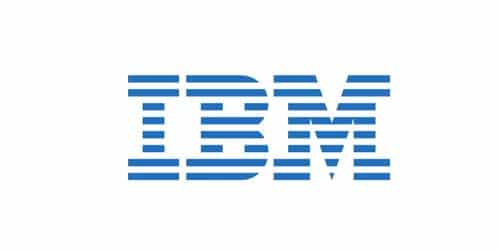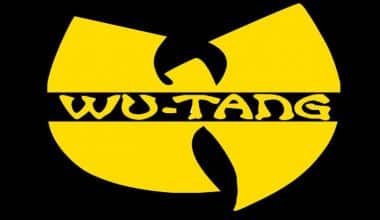A logotype is usually a symbol or letter that helps make the name of a company and defines its character, just like a country’s flag shows what that country is all about. Millions of people recognize them right away, and they help people know who their companies are and what they stand for. “IBM” is the International Business Machines Corporation, which is a global leader in the information technology industry. It was established by Charles Ranlett Flint over a century ago. When it comes to IT consulting, software, and hardware, their names, and logo are household names. Since its inception, the logo has gone through several iterations. The logo represents dependability and effectiveness. To learn more about the IBM logo, here is the history of how the old and new logos came to be and the career you can get at IBM’s company.
The Meaning of the IBM Logo?
IBM, which means International Business Machines Corporation, is a leading American computer manufacturer with a significant market share both in the United States and internationally. The company’s headquarters are in Armonk, New York. One of the most valuable things we own as a company is the IBM logo. It is one of the most well-known corporate logos in the world. It stands out from other logos by showing expertise and values. 76% of employees at IBM say it is a great place to work, compared to 57% of employees at a typical U.S.-based company.
IBM Logo
International Business Machines Corporation, or IBM, is a major computer technology company. In the early 20th century, its founder, Charles Ranlett Flint, established the company. Throughout the realms of information technology (IT) consulting, software, and hardware, their brand and offerings are universally recognized as being impeccable.
- Since its inception, the logo has gone through several iterations.
- Consistency and effectiveness are shown by the logo.
IBM Logo Design Elements
The three primary components of the IBM logo complement one another well. They’ve got two logos floating around right now.
#1. Primary Brand Symbol (1972- Present)
The current IBM logo has been in use since 1972. The initials “I” “B” and “M” are all capitalized on it.
Shape
The linear design philosophy is reflected in the logo. Each set of letters is accompanied by eight parallel stripes of the same width.
- The fluidity and quickness of their services are symbolized by the lines.
Color
Replicating the old emblem with the thirteen stripes was a major headache. Back then, photocopiers just weren’t up to the task of copying it accurately. Paul Rand was brought in to help with this issue.
- For this reason, Rand was adamant that we keep as much of the old logo’s layout as feasible.
- When he was done, the IBM logo had eight clean stripes instead of the previous thirteen.
- The leaking issue was effectively fixed.
- It quickly became a fashion staple of its era.
- He didn’t change the logo’s signature shade of blue.
The color blue has come to symbolize trustworthiness, intelligence, loyalty, and stability. The color light blue is calming to the human eye. The IBM logo is also designed to evoke feelings of power and authority. A logo so effective says a lot about a company and the quality of its work.
#2. The Second Branding (2018- Present)
They employ both a striped version (blue and white) and a solid (grey and white) logo. This updated version was released in 2018, and it is still widely used today.
Shape
As its second logo, IBM has gone for a more graphically striking form.
- IBM is surrounded by a heavy black rectangle.
- The actual letters are large and white.
Color
- In place of blue and white, the alternative logo is simply black and white.
The striking picture represents the reliability and dedication IBM has to its clientele.
The IBM Logo Font
The company uses a very basic but instantly recognizable font in all of its marketing materials. Similar serif typefaces are used for both logos. The font used in the print was created especially for this item. The logo is minimalistic, yet striking and modern.
The letters I, B, and M are all written in uppercase, bold capitals with small extensions at the top and bottom.
The logo can be used in a variety of settings.
- Large billboards as well as little product labels can both make use of either logo.
Symbolic Impact and Random Facts About IBM Logo
After the split with the global IBM, the logo was altered relatively little. The original logo featured 13 stripes, however, the new one only has 8. The fact that just minor adjustments were made from the original 1956 logo to the current one proves that they were nearly there.
- The fact that the current IMB logo has nothing in common with the 1889 iteration is one of the more intriguing aspects of the design.
IBM Logo Slogan
Simply put, “THINK” is the motto of the IMB. The word “ThinkPad” refers to their wildly popular product line of laptops.
What is The Meaning of The IBM Logo?
The greatest levels of professionalism, strength, dependability, and excellence are represented by this service’s logo. They also have the firm name written in capital letters with a blue and white striped border. The typeface has big serifs and is strong.
The Old IBM Logo
The largest producer and supplier of hardware and software in the world is IBM. Additionally, she has expertise in consulting and IT services. The service was established in 1889, and it adopted its current objective in 1911. Flint Charles founded the business as a one-man enterprise in Endicott Village, New York State.
The digital corporation has had a number of different names since its inception before being given the name International Business Machines. This served as the foundation for the company’s identification and was included in the emblem. There are a total of eight changes.
IBM Logo Design History From 1889 -1914
Since International Time Recording Company and Computing Scale Company merged to form IBM, the company’s visual identity hasn’t changed that much, with a few small changes here and there. Its first logo came out in 1889, and it was a beautiful, sleek ITRCo monogram with a straight-serif font and a single color.
- The letters “ITR” and “Co” are in separate rows.
- The “Co” acts as a base for the letters above it.
- The letter “T” is much bigger than the letters around it.
They made the logo this way because they wanted it to show what the International Time Recording Company (ITRCo) was all about.
IBM Logo Design History From 1891 — 1914
The second logo, which was almost identical to the first, came when the corporation was renamed The Computing Scale Company. The firm name was abbreviated using the monogramming technique by the management. CSC had a different design, with the letter “C” in a wide typeface, followed by an “S” in the center, and a smaller “Co.” The letters of the logo were written in an attractive font.
IBM Logo Design History From 1910 — 1924
In 1910, the companies joined together to form the Computing-Tabulating-Recording Company. That same year, the logo was made. The new logotype was framed in a thin. It is rendered in a stunning and powerful bespoke typeface. The letters were also arranged in this way: there’s a massive, straight “T” in the foreground, an “R” in the rear with a long and curled tail, and both “C”s are wishbone-style. The leg of the letter “T” runs through the curled “R,” giving the logo a printed appearance.
When the company was bought, it went through a major rebranding. They changed their name to the Computer Tabulating Recording Company.
- On the symbol, you can see the letters “CTRCo.”
- It also has a big “T” with an “R” behind it.
- On the left is a C, and on the right is the word “Co.”
- All of the letters and designs are black.
Reason: Since the company had a big rebranding, they wanted to make a statement by changing their logo to include the new letters CTRCo.
IBM Logo Design History From 1924 — 1947
On February 14, 1924, the firm was renamed International Business Machines Corporation or IBM, and the corporation’s complete name was utilized as the foundation for the symbol for the first time. The phrases were written in the shape of a globe, with a large equator surrounding them. The term “business” is at the top, and “machines” is below, indicating the global coverage of many nations with innovative technology. The IBM logo also showed that the company wanted to grow and become a major player in the international market.
IBM Logo Design History From 1947 — 1956
In 1947, the name International Business Machines was thus replaced by the abbreviation IBM. The new logo is simple yet powerful, with a calm and light blue logotype and capital letters in a square and massive serif typeface design.
- The logo was changed very little by the designers.
- The B’s round hole was turned into two squares of white color.
- The font, serif, stays the same.
- Both the top and bottom of M are longer than the middle.
Reason: Complicated logos were made easier to understand by making them simpler, which shows how user-friendly they are.
IBM Logo Design History From 1956 — 1967
The 1956 rebranding altered IBM’s logo typeface (extending and emphasizing the serifs) but left the color palette the same. Another adjustment was made to the negative space of the letter “B,” which was transformed into two white squares. The simple lettering format not only made IBM more popular and welcoming, but it also represented to its audience the company’s warmth and user-friendliness. When utilized on a business card, such a great logo design will immediately inform potential customers about the company. Even if the receivers were unfamiliar with the brand name IBM, they learned about it through the card itself.
- IMB logo went from being a simple block to a line.
- The stripes on the logo are all the same size.
- The stripes are all the same width, which shows that their workers are all equal.
- In the logo, there were thirteen white stripes.
Reason: There were no other well-known companies whose logos were all stripes. They stood out because of it. Their fast services are shown by how linear their logo is. So, the version that is used now has a long and interesting history. The IMB logo has changed over the years and is now one of the most popular among IT companies around the world.
IBM Logo Design History From 1967 — 1972
1967 was a watershed moment in the history of the IBM logo. Paul Rand, a well-known graphic designer, created the first iteration of today’s renowned IBM logo at the time. It was also identical to the previous design in that the blue word mark was sliced horizontally into 13 equal strips. Why are there so many stripes? This breadth was appropriate for understanding that these were homemade cables, as the author intended. They were perfectly proportionate to the size of the letters.
IBM Logo Design History From 1972 — Present
In 1972, the thirteen stripes were replaced with eight in a minor logo update. Although the number 8 is assumed to define the 8-bit system, the developer believes that the stripes represent the company’s production and distribution system’s speed and dynamics.
The light blue color of the logo is relaxing to the eye and is frequently associated with depth, stability, trust, loyalty, and innovation. They also convey a sense of power, professionalism, and superiority. It is a highly expressive logo that represents their passion, hard work, and professionalism.
IBM Logo Shape
The logo is also made in a straight line. The letters are all spaced out the same distance from each other, and there are eight even stripes going across it. The lines show how quickly and quickly their services change.
IBM Logo Color
The old IBM logo, with thirteen stripes, was hard to copy. Back then, photocopiers couldn’t do a good job of copying it. They hired Paul Rand to help them figure out what to do. Rand liked the way the logo looked before so much that he tried to keep as much of it as he could. He changed the old IBM logo from thirteen lines to eight straight lines. It also solved the problem of dripping very well. At the time, it became a trend. He didn’t change the color of the logo’s blue. People often think of blue as being stable, deep, loyal, trustworthy, and smart. The light blue color makes people feel calmer. With the IBM logo, they also try to show that they are strong, professional, and in charge. It is a very effective logo that shows how professional they are.
IBM Logo Redesign in 2018
In 2018, the corporation chose to discontinue the use of its original “full” logo, which was designed in 1956 but has undergone considerable color changes. It was a white “IBM” word mark on a solid gray, horizontally oriented background this time. In addition to the traditional blue and white striped variant, IBM employs this strict grey and white variation of their logo. The powerful design emphasizes IBM’s commitment to stability and dependability for its clients.
The logo, which employs a serif typeface, is shockingly basic yet recognizable. The letters I, B, and M are in large, basic letters, with the top and bottom of the ‘M’ somewhat expanded. The logo is scalable and adaptable, and it may be used on both billboards and small product labels.
The IBM logo’s original concept is thus, one of the main reasons for its success. The graphic designer’s linear approach to logo design in 1967 is very admirable. There is most likely no other logo with a fully striped pattern. This distinction distinguishes the logo from the crowd. The design looks fantastic in commercials and draws attention to the text.
Thomas J. Watson coined IBM’s motto, simply THINK, in December 1911. This tagline is also used to describe the hugely successful ThinkPad. Lenovo’s line of laptops and tablets is now classified as IBM goods. The ThinkPad line, which allegedly delivers smarter, higher-end gadgets, is available at any IBM partner store.
History of IBM Logo
IBM has been around since 1889. It is a big company that makes and sells software and hardware and also provides consulting and IT services. Even though it is known as one of the most innovative and technologically advanced companies in the world, its logo is also one of the best and most eye-catching examples of graphic design. The current IBM logo, which was made by Paul Rand, the most well-known and respected graphic designer of the 20th century, shows that the company’s products are unique, confident, and better. It also helps to promote the brand in the worldwide information technology sector. However, the first iteration of the logo looked nothing like it does now. Let’s have a look.
International Business Machines (IBM), also known as “Big Blue,” is a multinational corporation with its headquarters in Armonk, New York, in the country of the United States. The companies that developed the first time clocks and data-tabling computers based on punched cards, among others, as well as other businesses that tried to automate common business practices came together to become IBM. These businesses merged to become the Computing-Tabulating-Recording Company in 1911. (CTR).
The corporation hired Thomas J. Watson (1874–1956) in 1914 as general manager, and he was also promoted to president in 1915. The business was renamed “International Business Machines” in 1924. Electric typewriters were added to IBM’s portfolio of office supplies. In order to create a highly effective sales staff that could come up with solutions for customers who were unfamiliar with cutting-edge technology, Watson worked as a salesman. He lived by the motto “Think.” The cardboard cards were not to be “folded, spindled, or mutilated,” customers were warned. In the 1940s and 1950s, IBM conducted its first computer trials, which were just incremental improvements to the card-based system.
With the introduction of the System/360 family of mainframe computers, it advanced in the 1960s. IBM provided a variety of hardware, software, and service agreements to attract customers to stick with “Big Blue” as their demands increased. Switching brands were expensive because the majority of the software was built from the ground up by in-house programmers and only supported one brand of computers. In addition to selling hardware, the company marketed security and reputation; after warding off copycats and surviving a federal anti-trust action, it rose to become one of the most admired American corporations of the 1970s and 1980s.
Due to the mainframe company’s slow reaction to the personal computer revolution, IBM struggled in the late 1980s and early 1990s, with losses exceeding $8 billion in 1993. Desktop computers provided the necessary power and were easier to manage and use than expensive mainframes.
IBM Stock Price
chart and data since 1962 adjusted for splits. The latest closing stock price for IBM as of February 2023, is 117.80.
- The all-time high IBM stock closing price was 141.62 on March 14, 2013.
- The IBM 52-week high stock price is 144.94, which is 23% above the current share price.
- The IBM 52-week low stock price is 114.56, which is 2.8% below the current share price.
- The average IBM stock price for the last 52 weeks is 130.36.
IBM Career
Choosing a career at IBM is like putting money into your future. Whether you’re a freshman, a senior, or a post-graduate, IBM will help you turn your years of schooling into real accomplishments through a wide range of career opportunities and development programs around the world.
At IBM, there are a lot of ways to build the career you’ve always dreamed of. IBM, therefore, keeps putting money into training and retraining its staff. At IBM, employees are also required to learn for 40 hours a year. They use a wide range of learning tools and resources to learn about things that interest them. There is, thus, no limit on the number of technical and non-technical career certifications that IBM employees can get from outside sources.
#1. Entry-Level Cybersecurity Consultant: 2023
There are few more valuable resources for modern firms than their information and data. For this particular IBM career, you will also play a pivotal role as an advisor to IBM’s customers as a Security Consultant, researching their business requirements and recommending the most appropriate security solutions. Technical expertise will be put to use as you strike a balance between enabling and securing the client’s organization using cognitive technologies that have helped propel IBM to the top of the enterprise security market.
#2. 2023 Entry-Level Associate Data Engineer
This career at IBM Consulting means engaging in long-term partnerships with customers all around the world and making an impact via close collaboration. Moreover, you’ll collaborate with leaders who are shaping the future of business in a variety of sectors to advance the hybrid cloud and AI strategy of the world’s most cutting-edge and valuable corporations. By using the strategic partner ecosystem and the broad technology platforms throughout the IBM portfolio, including IBM Software and Red Hat, you can also accelerate impact and make substantial changes for your clients.
Position and Duties Of This IBM Career
- The applications we make at IBM rely heavily on the analytical and technical abilities of our Data Engineers. Specifically, your job will require you to:
- Using an emphasis on big data, develop, implement, and validate prediction models and statistical models.
- Use a number of statistical and machine-learning methods
- Use cutting-edge resources like the R Library, Python, and TensorFlow in conjunction with IBM’s resources and our AI application suites.
- Participate in an Agile, team-based setting with engineers, scientists, consultants, and database administrators from a wide range of fields and specializations to address the difficulties of behavior prediction using analytical rigor and statistical methodologies.
- Create groups or code to effectively clean and integrate data for reuse, create predictive or prescriptive models, and assess the effectiveness of those models.
#3. Entry Level Technical Customer Support: 2023 (Weather)
If a TV station wants to keep its viewers safe, increase viewer loyalty, and streamline operations, they need The Weather Company, an IBM business, to provide them with the best weather and traffic data and insights possible. The Weather Company, thus, provides TV broadcasters with the data and tools they require to maintain a competitive edge, increase audience engagement, and maximize revenue across all screens. Aviation, broadcasting, cable, digital/mobile, government, retail, and transportation are just a few of the sectors served by The Weather Company, which is also widely recognized as the industry standard for reliable weather forecast data.digital/mobile
What You Are Expected To Do With This IBM Career and How to Do It
- The CSA’s job is to help customers by answering their questions and fixing their problems so that products and services can be delivered to them over the internet. They’ll also help with technical and application support for TWC hardware and software, workstation and remote system and application installation, and more
- Assist TWC customers with their weather decision support and visual display systems via phone, email, and digital channels, performing such duties as problem qualification, fault isolation, problem determination, and problem resolution.
- User-facing application support and assistance
- Create tickets to report hardware faults and monitor their resolution
- Offer software upgrade and maintenance services remotely.
- Depending on the situation, hardware installation may necessitate remote access to client workstations in order to be carried out alongside the remote installation of any necessary supplementary components or systems.
#4. Technology Sales Representative – 2023 Entry-Level Sales
IBM, one of Forbes’ 2021 “World’s Best Employers,” encourages its employees to pursue personal and professional development in order to become industry leaders in the emerging fields of hybrid cloud computing and artificial intelligence (AI), which will ultimately benefit the company’s clients.
Clients will rely on you as a Technology Sales Representative, also known as a Brand Sales Specialist, to help them decide how their technology needs will evolve in the future. As a consultative seller, you’ll play a crucial part in the growth and success of businesses by delivering innovative solutions that help employees in a variety of jobs achieve their objectives.
Position and Duties Of This IBM Career
You will be responsible for building rapport with customers, learning about their difficulties, gaining their trust, and then selling them on the idea that your solution will provide real value to their business.
It’s possible, but not certain, that a typical day for a technology sales representative will involve the following activities:
- Responsible for managing a specific client base and articulating, validating, and conveying IBM’s technology’s technical and business value differentiation.
- Developing strategic, long-term relationships with clients through the application of solution-selling strategies for reaching out to and influencing key opinion leaders, vetting potential opportunities, and meeting the demands of existing clients.
- Managing all aspects of the sales process, from initial contact to closing the deal, with a focus on bringing in new customers and growing existing accounts.
- Working together with other members of IBM’s sales force, including marketers, salespeople, and technical staff, as well as IBM Business Partners, to create effective marketing campaigns and generate new business leads.
- Ability to exhibit IBM’s thought leadership throughout customer engagements by continually developing competence in consultative selling, technical problem solving, and application of knowledge.
#5. Entry Level – Associate Consultant
Working at IBM Consulting means engaging in long-term partnerships with customers all around the world and making an impact via close collaboration. You’ll also collaborate with leaders who are shaping the future of business in a variety of sectors to advance the hybrid cloud and AI strategy of the world’s most cutting-edge and valuable corporations. However, by using the strategic partner ecosystem and the broad technology platforms throughout the IBM portfolio, including IBM Software and Red Hat, you can accelerate impact and make a substantial change for your clients.
Position With This IBM Career
Helping clients transform how they respond to market developments and closely aligning their company strategy and vision, you’ll find yourself at the crossroads of technology, people, and process as an Associate Consultant at IBM.
Potential Duties of an Associate Consultant at IBM Career include:
- IBM’s specialized teams are here to meet your every solution need, and we offer a wide range of options for our clients. Consequently, the tasks you’ll perform and tools you’ll use will differ depending on the team you end up joining. Some examples of what Associate Consultants accomplish are provided below.
- Help in moving to the cloud and updating system software (such as SAP, Oracle, Microsoft, Workday, and Salesforce)
- Coordinate or facilitate activities including focus groups, meetings, and stakeholder interviews
- Gather product owner/business lead requirements in writing.
- Client requirements must be translated into analytical specifications for IBM solution deployment.
- Define potential future and existing operational scenarios (processes, models, use cases, plans and solutions)
- Collaborate with customers to accurately translate business needs into solution specifications using a mutually agreed-upon process.
- Create targeted messages for certain groups
- Participate in Agile, Team-Based Environments
- Design IBM’s way of thinking to aid in resolving client issues.
- Use information analysis to build a case for your actions and plans.
What is an 8 Bar?
A chorus typically consists of 8 measures. An 8-bar hook is a common feature in rap music. Sometimes musicians will perform four bars, then repeat the pattern to complete eight bars. Within this framework, you are completely free to do whatever you wish.
How Many Minutes is 16 Bars?
A 16-bar cut should last between 30 and 45 seconds (a maximum of one minute), and a 32-bar cut should last between 1:15 and 1:30. (two minutes is maximum).
Why There Are 8 Bars in IBM Logo?
The characteristic eight stripes that make up the letters IBM, thus making the IBM emblem simple to identify. It is intended that the horizontal stripes convey “speed and vitality.”
How Many Bars are 30 Seconds?
A 16-bar cut should ideally last 30-45 seconds, with a maximum of one minute.
What Are The 3 Principles of IBM Design Thinking?
Three guiding principles serve as the foundation of the IBM Design Thinking Model: user-centered outcomes, cross-disciplinary collaboration, and the loop process that incorporates iterative reinvention.
How Deep is A Bar?
Home bars typically have a depth of 15″, while commercial bars often have a depth of 25.” When discussing the dimensions of residential and commercial bars, the terms “depth” and “width” are interchangeable.
What’s the Loop IBM?
Identifying user requirements and imagining a better future are the core competencies of IBM Design Thinking. We call it the Loop. The Loop is an ongoing cycle of taking in, thinking about, and making. Keep an eye out to see what people overlook.
Brief Summary of IBM Logo
IBM, which stands for International Business Machines Corporation, is regarded as the preeminent computer maker in the United States and holds a significant portion of the market share both domestically and internationally. Armonk, in the state of New York, is home to its headquarters.
Even though IBM got a big share of the market, it wasn’t able to keep its traditional position as the best maker of personal computers. New technologies based on semiconductor chips were making computers smaller and easier to make. This made it possible for smaller companies to enter the market and take advantage of new technologies like workstations, computer networks, and computer graphics.
Related Article
- Technology Consultant: Overview of Top 10 Technology Consulting Companies
- SONY LOGO: Meaning and History Of The Logo Design
- ADIDAS LOGO: The Invaluable History Around Great Branding.
- FREELANCE DEVELOPER: All You Should Know About It and How to Start Freelancing






